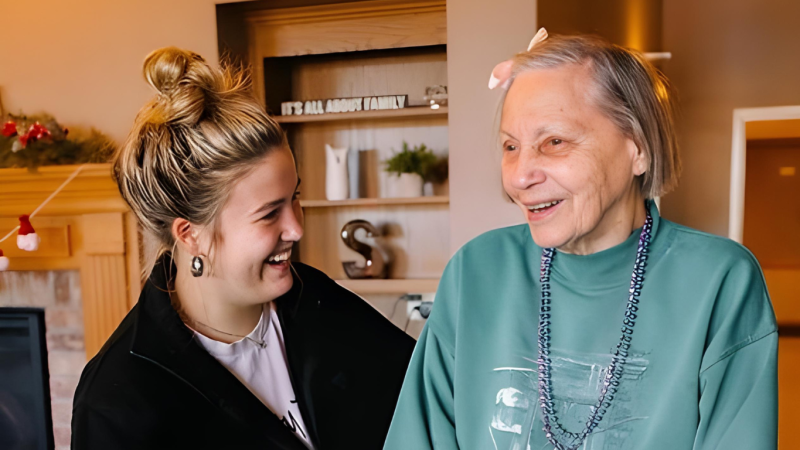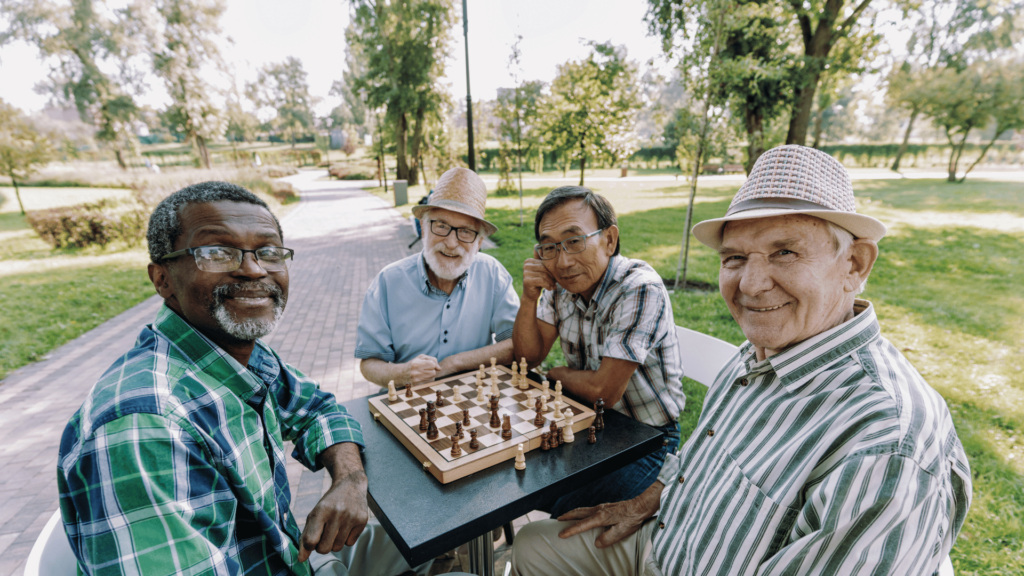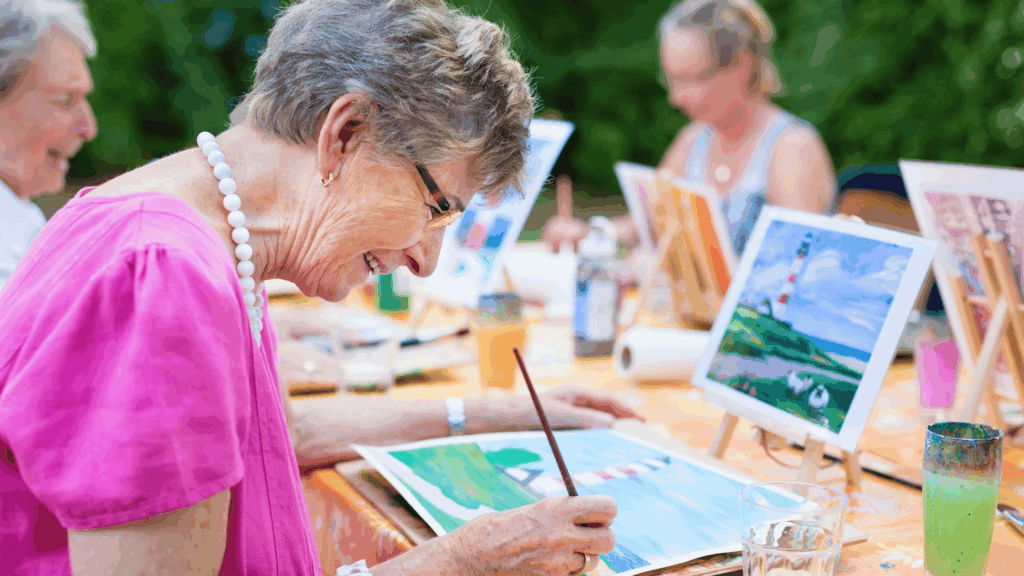Traditions Senior Care Team | March 23, 2025
Creating a Home: Personalizing Living
Spaces in Assisted Living Communities
Moving into an assisted living community is a significant transition. While these communities offer vital support and care, ensuring residents feel at home is crucial for their well-being. Personalizing their living spaces can transform a simple room into a comforting and familiar haven. This blog post delves into the importance of personalization, practical tips for making spaces feel like home, and how it impacts the lives of residents.
The Importance of Personalization in Assisted Living
Personalization goes beyond mere decoration; it’s about creating an environment that reflects an individual’s unique identity and history. For seniors, familiar surroundings can provide a sense of security and reduce feelings of disorientation or isolation.
- Emotional Well-being: A personalized space can evoke positive memories, reduce stress, and boost overall mood. Familiar items like family photos, cherished keepsakes, and favorite books can provide comfort and a sense of continuity.
- Cognitive Benefits: Surrounding oneself with familiar objects can stimulate memory and cognitive function. This is particularly important for residents with cognitive impairments like dementia or Alzheimer’s disease.
- Sense of Control and Independence: Allowing residents to personalize their spaces empowers them and reinforces their sense of control over their lives. This can be especially important during a time of significant change.
- Social Connection: Personalized spaces can serve as conversation starters, encouraging interaction with staff and other residents. Sharing stories about cherished items can foster a sense of community and belonging.
- Enhanced Comfort: A space tailored to individual preferences can enhance physical comfort. From choosing the right bedding to arranging furniture for optimal accessibility, personalization addresses specific needs and preferences.
Practical Tips for Personalizing Assisted Living Spaces
Creating a personalized space in an assisted living community doesn’t have to be overwhelming. Here are some practical tips to help residents and their families transform their living areas:
Bring Familiar Furniture and Decor:
- Encourage residents to bring their favorite furniture pieces, such as a comfortable armchair, a beloved dresser, or a cherished lamp.
- Decorate with familiar items like family photos, artwork, and decorative pillows.
- Small, personal touches can make a big difference in creating a sense of familiarity.
Incorporate Personal Mementos and Keepsakes:
- Display collections of cherished items, such as books, figurines, or travel souvenirs.
- Create a memory box or shadow box to showcase meaningful items and photos.
- Frame handwritten letters or cards from loved ones.
Use Color and Texture to Create a Warm Atmosphere:
- Choose paint colors or wallpaper that reflect the resident’s personal style and preferences.
- Use soft, textured fabrics for bedding, curtains, and throw blankets.
- Incorporate natural elements like plants or flowers to add life and vibrancy.
Optimize Lighting:
- Ensure adequate lighting for reading, hobbies, and everyday activities.
- Use warm, soft lighting to create a cozy and inviting atmosphere.
- Consider using dimmer switches to adjust lighting levels according to the resident’s preferences.
Create a Memory Wall:
- Display a collage of family photos, artwork, and other meaningful items.
- Organize photos chronologically to tell a visual story of the resident’s life.
- Encourage residents to share stories and memories associated with the displayed items.
Personalize with Hobbies and Interests:
- Create dedicated spaces for hobbies like reading, knitting, painting, or playing music.
- Display collections related to the resident’s interests, such as books, stamps, or model cars.
- Ensure easy access to materials and tools needed for their favorite activities.
Focus on Comfort and Accessibility:
- Choose furniture and decor that are comfortable and easy to use.
- Ensure clear pathways and remove potential tripping hazards.
- Install grab bars or other assistive devices as needed.
Involve Family and Friends:
- Encourage family and friends to contribute to the personalization process by bringing gifts, photos, or other meaningful items.
- Host decorating parties or collaborative projects to create a sense of shared involvement.
- Make sure to respect the residents’ wishes.
Utilize Technology:
- Digital picture frames can display hundreds of photos.
- Voice activated assistants can help control lighting, or play favorite music.
- Tablets can be used to video chat with family.

The Impact of Personalization on Quality of Life
Personalizing assisted living spaces has a profound impact on the quality of life for residents. It contributes to:
- Increased Happiness and Satisfaction: A personalized space can create a sense of joy and contentment, making residents feel more at ease in their new environment.
- Reduced Anxiety and Depression: Familiar surroundings and personal touches can alleviate feelings of anxiety, loneliness, and depression.
- Improved Social Interaction: Personalized spaces can facilitate conversations and encourage social engagement with other residents and staff.
- Enhanced Sense of Belonging: Feeling at home in their living space can foster a stronger sense of belonging within the assisted living community.
- Greater Independence and Autonomy: Personalization empowers residents to maintain a sense of control over their lives and surroundings.
Overcoming Challenges in Personalization
While personalization is essential, it can present certain challenges:
- Space Limitations: Some assisted living rooms may be small, requiring creative solutions for maximizing space.
- Safety Concerns: Ensuring that personalized items do not create safety hazards is crucial.
- Community Guidelines: Adhering to the community’s policies and guidelines regarding decorations and modifications is important.
- Changing Needs: As residents’ needs change, their living spaces may need to be adapted accordingly.
Tips for Families and Caregivers
- Communicate with the resident about their preferences and needs.
- Involve the resident in the decision-making process as much as possible.
- Be patient and understanding during the transition period.
- Collaborate with the assisted living staff to ensure a smooth and successful personalization process.
- Regularly update and refresh the space as needed.
Final Tips for Creating a Personalized Space:
- Start small and gradually add personal touches over time.
- Focus on items that hold significant emotional value.
- Prioritize comfort and functionality.
- Don’t be afraid to experiment and try different arrangements.
- Remember that personalization is an ongoing process.
Conclusion
Personalizing assisted living spaces is a vital aspect of providing quality care and support for seniors. By creating environments that reflect their unique identities and histories, we can enhance their well-being, promote a sense of belonging, and ensure they feel truly at home.
Are you ready to help your loved ones transform their assisted living space? Contact us today to learn more about our community and how we support residents in creating personalized and comfortable living environments. Our staff is dedicated to ensuring that every resident feels valued, respected, and at home. Call us today to schedule a tour and see how we can help your loved one thrive.
Latest Blogs
The Importance of Male Friendships in Senior Communities
Moving into an assisted living community represents a significant life transition. While…
Maintaining Mental Wellness in Assisted Living
Moving into an assisted living community represents a significant life transition. While…
Strategies for Supporting a Loved One with Dementia or Alzheimer’s
Dementia and Alzheimer's disease present unique challenges, not only for the individuals…



